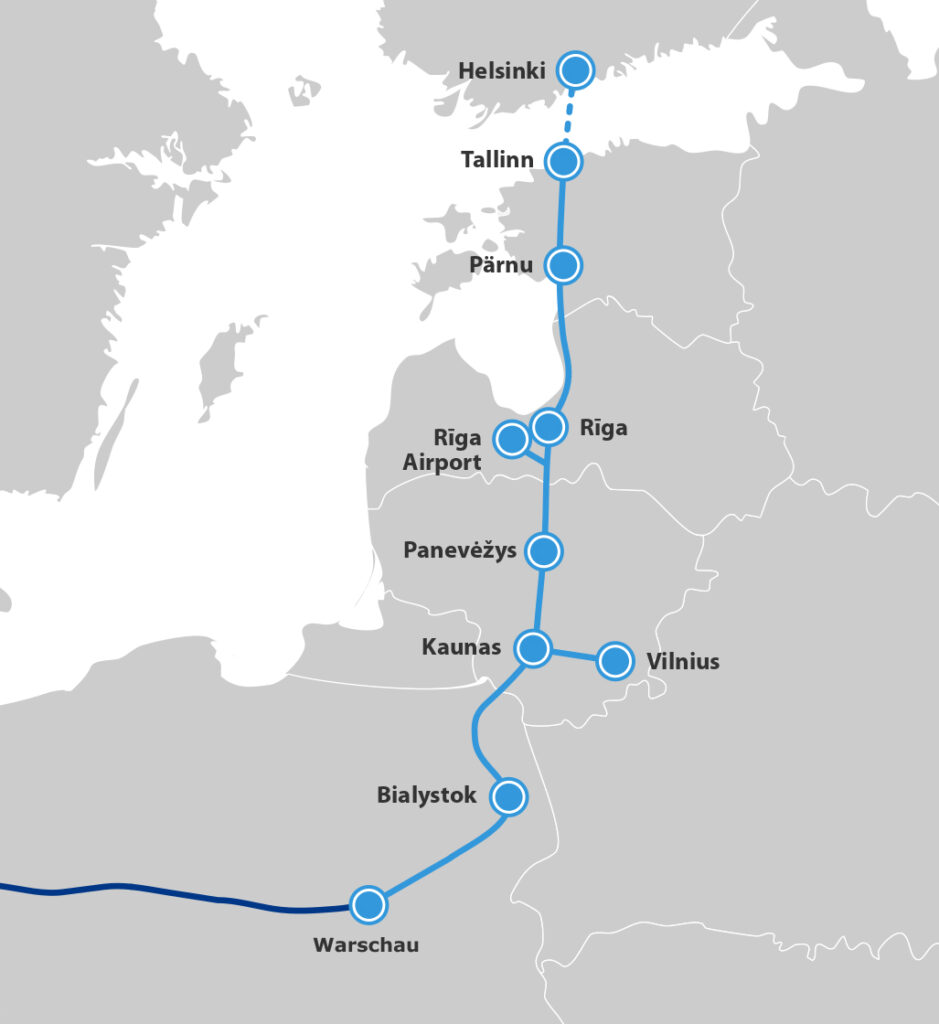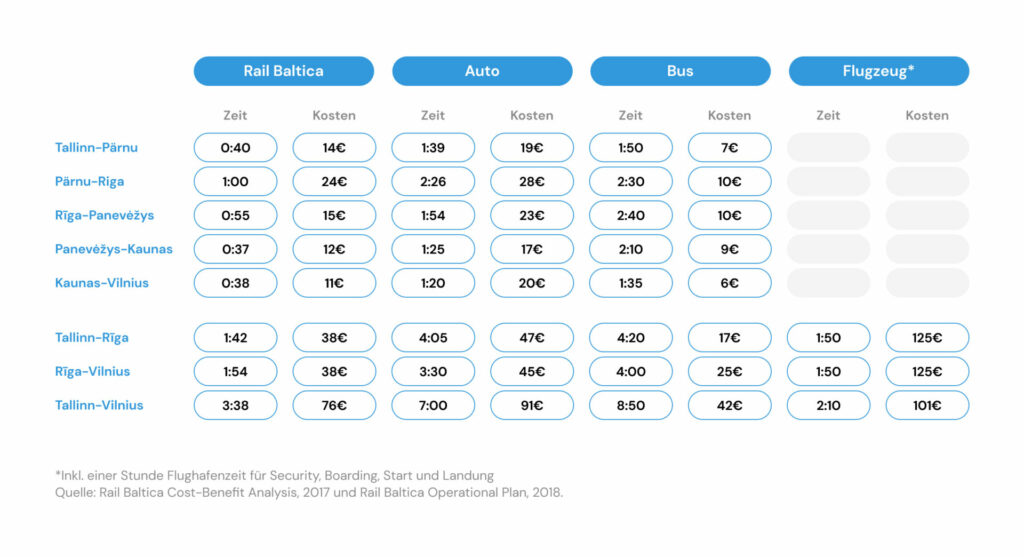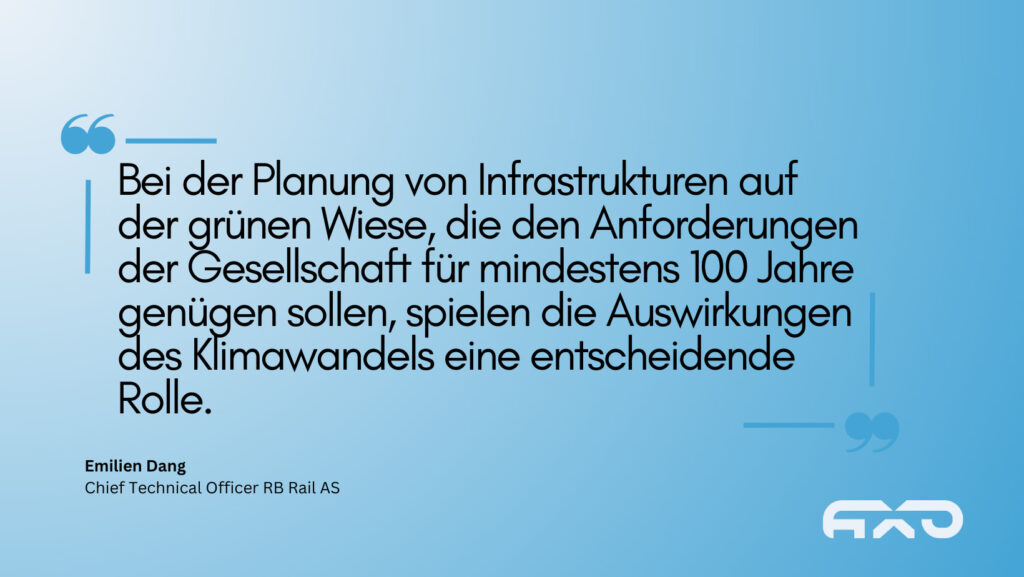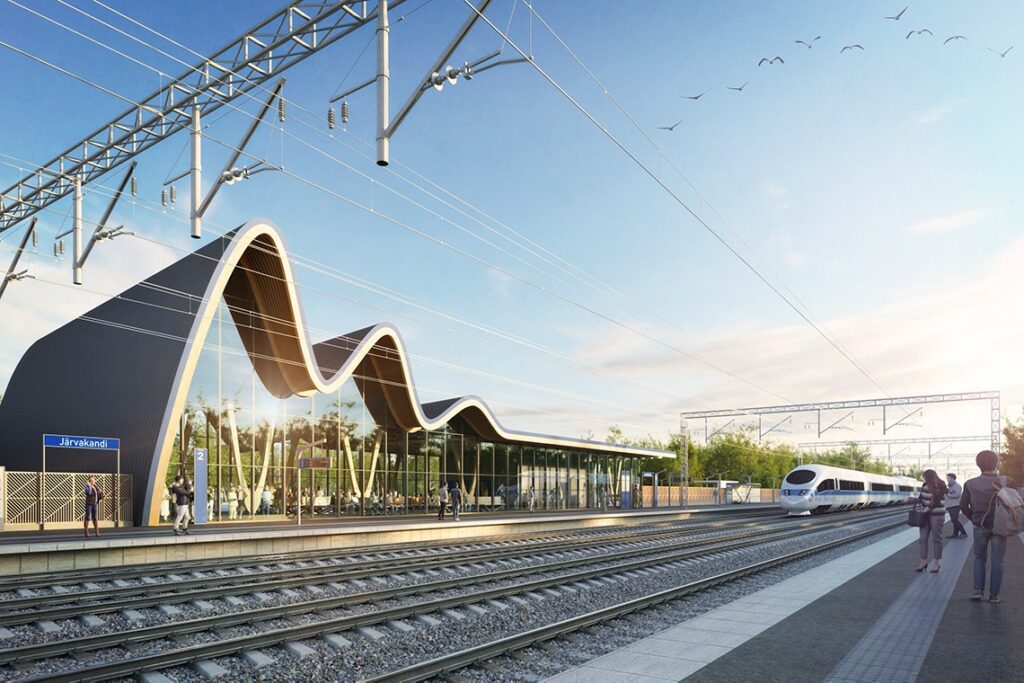Rail Baltica is undoubtedly the most captivating new railway project in Europe at present. It has far-reaching implications for the Baltic states and the entire continent. This high-speed rail line will not only improve connectivity. It will also contribute to sustainability and create thousands of jobs. The construction marks a historic turn for the Baltic states and underscores their connection with Europe. In this article, we take a closer look at Rail Baltica. Explore its symbolic significance as well as its technical and ecological aspects.
Rail Baltica at a Glance
870 Kilometers for Better European Connection
Stretching over 870 kilometers, Rail Baltica facilitates a seamless link between Finland, Estonia, Latvia, Lithuania, and Poland with Central Europe’s rail network. This double-track line will be fully electrified. This is making Rail Baltica the largest cross-border railway electrification project in Europe to be executed in a single project.
The expansion of the high-speed line strengthens the economic corridor in Northeastern Europe and extends the EU’s North Sea-Baltic Corridor, connecting Rotterdam, Berlin, and Warsaw. After decades of planning, completion is scheduled for 2026.
Rail Baltica will be built on European standard gauge (1435 mm), a notable departure from the broader gauges (Russian broad gauge 1520 mm) predominantly used in the Baltic countries, a relic of Soviet times. The EU Commission’s regulation for the Trans-European Transport Networks (TEN-T) envisions the standardization of gauge widths across Europe. This has been a controversial topic in Finland, Estonia, and Lithuania due to associated high costs. Rail Baltica thus also addresses this challenge.
Different gauge widths are just one of the challenges in cross-border rail traffic. This article explores other aspects that affect interoperability.
From Estonia to Poland in Record Time: Drastically Reduced Travel Duration
The total length of Rail Baltica is distributed across 392 km in Lithuania, 265 km in Latvia, and 213 km in Estonia.
The line begins in Tallinn, extending through Pärnu, Rīga, Panevėžys, and Kaunas to the Lithuanian-Polish border. There will also be a connection from Kaunas to Vilnius. Trains will reach a maximum speed of 234 km/h (145 mph). Travel time from Lithuania’s capital to Estonia will be halved from seven hours to three hours and 38 minutes. From Vilnius, you can reach the Polish capital in just over four hours.

A New Era of Mobility: Fast, Frequent, Affordable
Rail Baltica will offer a rapid train connection between the Baltic capitals every two hours. There will be four high-speed trains daily from Tallinn to Warsaw and Vilnius. On the Vilnius-Kaunas-Warsaw route, up to ten trains per day are planned, along with two night trains on the routes Tallinn-Riga-Kaunas-Warsaw-Berlin and Vilnius-Kaunas-Warsaw-Berlin
Travelers from Riga International Airport will also benefit from improved connectivity: a train at least every 30 minutes will take them from Riga Central Station to the airport in just ten minutes.
The rail line promises not only time savings but affordability: only bus travel is cheaper, but it takes significantly longer, as shown in the following graphic:

Lighthouse Project for Sustainable Rail Traffic: Rail Baltica Sets New Standards
The new high-speed line sets new benchmarks in ecological aspects. Besides the fact that rail is the most environmentally friendly mass transit mode, sustainability plays a significant role in the planning and construction of Rail Baltica.
Emilien Dang, Chief Technical Officer of the joint venture RB Rail AS, explained the background at the UN Climate Conference COP28 in Dubai in December 2023.
During the panel discussion “Rail Baltica Project as a Catalyst for Sustainable Transport Future,” he emphasized that Rail Baltica has incorporated climate-related considerations into the project’s lifecycle from the beginning. The Design Guide underlying the tenders prescribes durabilities of up to 100 years. Tracks, rails, sleepers, switches, and fastening systems are set for 50 years, and signaling, telecommunications, and SCADA (Supervisory Control and Data Acquisition) for 30 years.

The energy to power the high-speed trains will come from renewable sources and be used as efficiently as possible.
This is associated with a significant reduction in CO2 emissions: by 2030, over 150,000 tons of CO2 per year are expected to be saved, and by 2050, even over 400,000 tons of CO2 per year.
All these measures contribute to reducing environmental impact and creating a sustainable transport future.
Rail Baltica: A Technological Masterpiece
In a mega-project like this, superlatives abound. Up to 2,400 kilometers of single-track catenary will be installed, requiring 4,350 tons of copper wire and 50,000 catenary masts. At least 10 substations are needed to power the operation.
Technically, everything in such a project is state-of-the-art. For example, the signaling system will be based on ERTMS (European Rail Traffic Management System) Levels 2 or 3. Trains without ERTMS on board will not even be considered. Here too, the project company RB Rail AS is planning with foresight: according to EU plans, ERTMS is to be mandatory in the entire TEN-T network by the end of 2040.
Currently, three consortia are vying for the contract to electrify the high-speed railway line:
- COBELEC Rail Baltica, consisting of Cobra Instalaciones y Servicios und Elecnor Servicios y Proyectos (Spain)
- Alstom – BMGS – GE – Torpol, consisting of BMGS, Bombardier Transportation Baltics, Alstom Transport, GE Energy Power Conversion France, Torpol (Latvia, France, and Poland)
- STC Baltic Electrification, consisting of Colas Rail, Siemens Mobility GmbH, Siemens Mobility Oy Latvijas filiāle, TSO SAS (France, Germany and Latvia)
Digital Infrastructure and Sensor Technologies
Rail Baltica will rely on digital infrastructure to improve connectivity. In his presentation “Connected Europe, Connected Railways: How Rail Baltica is Leading the Way in Digitalization”, Andy Billington, an expert in innovation and sustainability at RB Rail AS, provides insights into digitalization and innovation solutions.
This includes the use of sensor technologies for monitoring infrastructure and train traffic. The integration and standardization of these data will play a crucial role in exploiting the full potential of Rail Baltica. Machine learning algorithms will be used to detect deviations from the norm and enable predictive maintenance.
EU-Funded Major Project: Economic Benefits of Rail Baltica
The estimated cost of Rail Baltica is 5.8 billion euros. However, the cost-benefit analysis promises a quantifiable benefit of up to 16.2 billion euros. The EU is funding up to 85 percent of this venture from its “Connecting Europe Facility” (CEF) fund. This project will not only promote economic development but also create thousands of jobs:
The construction of the line is expected to generate 13,000 direct full-time jobs and an additional 24,000 indirect jobs.
On the section from Kaunas to the Polish border alone, 116 new structures are to be built, necessary for future railway infrastructure – including stations, tunnels, bridges, and overpasses. One of the most complex structures of the project is the bridge over the Neris River
At nearly 1,510 meters long and 40 meters high, it will be the longest bridge in the Baltic states.

A particular challenge is that the bridge passes over a nature reserve. Therefore, the bridge piers must not stand in the water. At the same time, construction work must take place outside of fish migration and spawning times.
Rail Baltica: A Rail Infrastructure Project with Symbolic Significance
Since gaining independence in the 1990s, the Baltic states have steadily moved closer to Brussels. They have been members of NATO and the EU since 2004. The Baltic states have agreed to completely free themselves from the Russian electricity grid by 2025 and synchronize with the European networks. This endeavor reflects the region’s determination to reduce energy dependence and further advance its integration into Europe.
Rail Baltica symbolizes a new era of belonging and trade within Europe. It underscores the will of the Baltic states to maintain their sovereignty and establish themselves as an integral part of the European project.
Interested in future topics around the railway? Feel free to follow us on LinkedIn!


